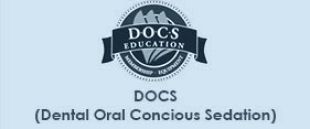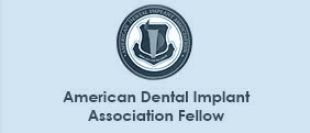






Achieving quality dentistry for life
Services
Dental Services in Hollis, New Hampshire
To ensure your dental health—and the dental health of your entire family—we provide a wide range of services including the development and implementation of a plan of care based on your individual needs.
Our wide range of services includes:
We approach cosmetic dentistry with your comfort, lifestyle, and future in mind.
Immediate Dentures
You have just had an immediate denture placed in your mouth. The following information will assist you to understand the sequence of events during the healing period.
Cracked-Tooth Syndrome
Teeth may crack when subjected to the stress of chewing hard foods or ice or by biting on an unexpectedly hard object. Teeth with or without restorations may exhibit this problem, but teeth restored with typical silver amalgam restorations are most susceptible. Older persons have more cracked teeth than younger individuals.
Crowns or Bridges
You have just had some crowns or fixed bridges cemented onto your teeth. They will replace your missing tooth structure or missing teeth very well and should give you years of service if you will observe the following suggestions.
Temporary Crowns or Bridges
You have just received a plastic restoration that will serve you for a short period of time. A few comments about this temporary restoration will be helpful to you.
Fluoride
Cavities used to be a fact of life. But over the past few decades, tooth decay has been reduced dramatically. The key reason: fluoride. Research has shown that it reduces cavities between 20 to 40 percent in children and 15 to 35 percent in adults. It also helps repair the early stages of tooth decay even before the decay becomes visible. Unfortunately, many people continue to be misled about fluoride and water fluoridation. To help you learn more about the important oral health benefits of fluoride, we have prepared the following in association with the American Dental Association (ADA).
Gum Disease
Periodontal disease, or gum disease, is a chronic inflammation and infection of the gums and tissue surrounding the teeth. It is the major cause of about 70 percent of adult tooth loss and it affects three out of four persons. Periodontal disease is directly related to both heart disease and stroke.
Periodontal Treatment
The following information describes the various treatments for periodontal disease. They are listed from least to most aggressive.
Periodontal Scaling and Root Planing
Periodontal scaling is a procedure very similar to typical scaling during a routine oral hygiene visit, but it is also significantly different in the following ways.
Implant Dentistry
Dr. Lyford has been restoring dental implants since 1987. You may have spaces in your mouth where teeth were lost or removed or never grew in. Although these spaces may be embarrassing, traditional dental restorations are not always the best solution. You may not want to sacrifice the structure of surrounding healthy teeth to bridge a space or removing a complete or partial denture at night may be inconvenient. Therefore, if you want a dental restoration that looks and feels as though it is really part of your mouth, dental implants may be the right choice for you.
Implant Placement
This brief instruction page will help you to understand the procedure for placing dental implants.
Implant Process
Your dentist places anchors into your jawbone. Then osseointegration (bone cells grow closely around the anchor and firmly hold it in place) may take up to six months to occur.
Your New Implant Prosthesis
We have done our best to provide you with a well-fitted, functional, and esthetic implant prosthesis. We feel confident that adjustment to these artificial teeth will be fast and that you will have many years of satisfaction and use from them. The following information is important for you to understand.
Porcelain Veneers
Porcelain veneers have been placed on your teeth. These restorations were placed with the finest materials and techniques available today. You should, however, be aware of the following information about your restorations
Temporary Restorations for Veneers
You have just had some teeth prepared for porcelain veneers. The teeth have received temporary plastic restorations to allow you to carry on your life in a normal manner while the new veneers are made. The following information may be helpful.
Kids and Teeth
Ask us or your pediatrician to prescribe daily fluoride tablets for your child or daily fluoride drops for your infant. Store the fluoride in a safe place – treat it as medication. The dosages are as follows.
Tooth-Colored Restorations (Composite Resin)
We have restored some of your teeth with tooth-colored materials. The resin (plastic) material used contains small “filler” particles of glass-like material for strength and wear resistance. These restorations will serve you well for years as they contain the finest and most up-to-date materials available today. You should, however, be aware of the following information about your new restorations
Material Choices for Tooth Restorations
This information is provided to help you make decisions about the use of materials for tooth restorations in your mouth. Many types of metals are used in dentistry for the replacement and rehabilitation of oral structures.
Post Reinforcement for Weakened Teeth
Each tooth has one to four root canals. These are small, hollow channels in the tooth filled with nerves, blood vessels and soft tissue. When these become infected and require removal, a root canal filling is placed after careful enlargement of the root canal and removal of all the infected tissue.
Root Canal Treatment
The pulp of your tooth (which contains the nerve and tiny blood vessels), just as in any other part of your body, can be infected. The pulp has a limited ability to heal itself. This infection can be caused by a deep cavity, which reaches the center of the tooth causing the pulp to die, a traumatic injury to the tooth, or extensive preparation (drilling) of the tooth.
Sealants
A dental sealant is a thin plastic film painted on the chewing surfaces of molars and premolars (the teeth directly in front of the molars). Sealants have been shown to be highly effective in the prevention of cavities and dental decay. They were developed through dental research in the 1950s and first became available commercially in the early 1970s. The first sealant was accepted by the American Dental Association Council on Dental Therapeutics in 1972. Currently the ADA has approved nine brands of sealants as acceptable, and two brands as provisionally acceptable.
Sedation Dentistry
Imagine not being afraid to go to the dentist. Imagine being able to accomplish all your dental care in as little as one appointment. This is what Anxiety-free Dentistry can do for you. You’ll be able to smile with confidence and chew your food without pain. If you’ve been putting off years of dental work, Anxiety-free Dentistry can change your life.
Sleep Apnea Therapy
Our office offers an FDA approved oral appliance solution for snoring and sleep apnea: the Thornton Adjustable Positioner® (TAP®).
Teeth Bleaching
Bleaching teeth that are discolored internally can be a very effective procedure, but you should know some important information before deciding to have this procedure accomplished on your teeth.
TMJ Disorders and Therapy
TMJ (temporomandibular joint) disorders are a family of problems related to your complex jaw joint. If you have had symptoms like pain or a clicking sound, you will be glad to know that these problems are more easily diagnosed and treated than they were in the past. Even clicking can lead to more serious problems, so early treatment is important. No one treatment can solve TMJ disorders completely and treatment takes time to be effective. But with the help of your health care team, you are more likely to have a healthier and more comfortable TMJ.
Bruxism
Bruxism is characterized by involuntary grinding and clenching of teeth primarily during sleep. The forces on teeth generated during sleep bruxing episodes have been reported on average to be twice as much as the normal working forces on teeth. Normal force on teeth is approximately 175 psi (pounds per square inch); the average patient who bruxes is placing about 350 psi on his teeth, and in extreme cases, this pressure can exceed 100,000 psi.










